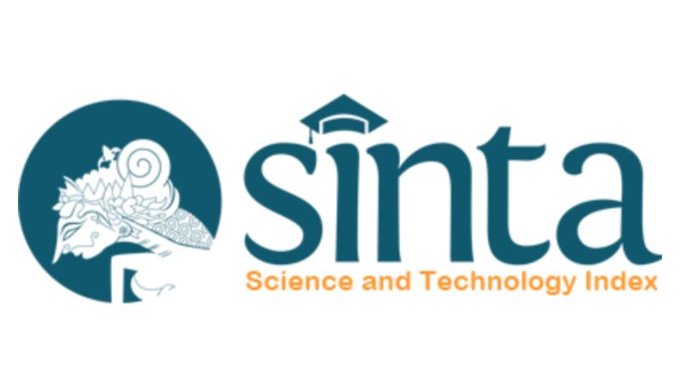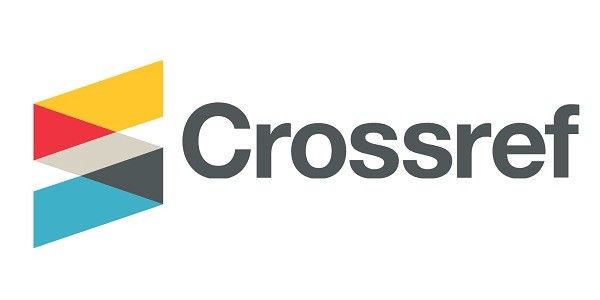Tinjauan atas Gangguan Tingkah Laku pada Anak
DOI:
https://doi.org/10.55175/cdk.v49i7.252Kata Kunci:
Conduct disorder, gangguan tingkah lakuAbstrak
Tingkah laku menantang dan sulit mengendalikan emosi, hilang kesabaran, merusak properti, dan penipuan/pencurian pada anak-anak prasekolah sering dianggap sebagai tingkah laku normal, sehingga sulit diketahui tingkat prevalensinya. Tingkah laku seperti menantang lebih mungkin dikenali sebagai “masalah” dibandingkan “gangguan” selama 2 tahun pertama kehidupan. Banyak dokter sulit membedakan antara perkembangan emosi normal (misalnya, ketakutan, menangis) dari tekanan emosional berat berkepanjangan.
Behaviors such as defiance, loss of temper, damaging property, and fraud/theft in preschool children are often considered as normal behaviors so their prevalence is difficult to be predicted. Challenging behaviors and difficulty to control emotions are more likely to be recognized as “problems” than “disorders” during the first 2 years of life. Many doctors feel difficult to distinguish normal developmental emotions (eg, fear, crying) from prolonged severe emotional distress.
Unduhan
Referensi
Fairchild G, Hawes DJ, Frick PJ, Copeland WE, Odgers CL, Franke B, et al. Conduct disorder. Nat Rev Dis Prim [Internet]. 2019 Dec 1 [cited 2021 Jan 21];5(1):43. Available from: http://www.nature.com/articles/s41572-019-0095-y
Scott S. Conduct disorder. 1st ed. Am Acad Child Adolesc Psychiatr. 2012;3:7-8
CDC. Behavior or conduct problems in children [Internet]. [cited 2021 Jan 21]. Available from: https://www.cdc.gov/childrensmentalhealth/behavior.html
Hawes DJ. Disruptive behaviour disorders and DSM-5. Asian J Psychiatr. 2014;11:102–5.
Salmanian M, Mohammadi MR, Hooshyari Z, Mostafavi SA, Zarafshan H, Khaleghi A, et al. Prevalence, comorbidities, and sociodemographic predictors of conduct disorder: The national epidemiology of Iranian children and adolescents psychiatric disorders (IRCAP). Eur Child Adolesc Psychiatry [Internet]. 2020 Oct 1 [cited 2021 Jan 21];29(10):1385–99. Available from: http://link.springer.com/10.1007/s00787-019-01448-9
Erskine HE, Ferrari AJ, Nelson P, Polanczyk GV, Flaxman AD, Vos T, et al. Research review: Epidemiological modelling of attention-deficit/ hyperactivity disorder and conduct disorder for the Global Burden of Disease Study 2010. J Child Psychol Psychiatr [Internet]. 2013. [cited 2021 Jan 21] ;54:1263–74. Available from: https://pubmed.ncbi.nlm.nih.gov/24117530/.
Mohan L, Yilanli M, Ray S. Conduct disorder. StatPearls [Internet]. 2020 [cited 2021 Jan 21]. Available from: https://www.ncbi.nlm.nih.gov/books/NBK470238/
Sadock B, Ruiz P. Kaplan and Sadock’s comprehensive textbook of psychiatry (2 volume set): 9780781768993: Medicine & Health Science Books [Internet]. 2021 [cited 2021 Apr 1]. Available from: https://www.amazon.com/Kaplan-Sadocks-Comprehensive-Textbook-Psychiatry/dp/0781768993
Wymbs BT, McCarty CA, Mason WA, King KM, Baer JS, Vander Stoep A, et al. Early adolescent substance use as a risk factor for developing conduct disorder and depression symptoms. J Stud Alcohol Drugs [Internet]. 2014 [cited 2021 Jan 21];75(2):279–89. Available from: /pmc/articles/PMC3965682/?report=abstract
Murray J, Farrington DP. Risk factors for conduct disorder and delinquency: Key findings from longitudinal studies. Canad J Psychiatr [Internet]. 2010 [cited 2021 Jan 21] ;55:633–42. Available from: http://journals.sagepub.com/doi/10.1177/070674371005501003
Sadock B. Kaplan and Sadock’s synopsis of psychiatry: Behavioral sciences/clinical psychiatry [Internet]. 2021 [cited 2021 Nov 3]. Available from: https://www.amazon.com/Kaplan-Sadocks-Synopsis-Psychiatry-Behavioral/dp/1609139712
Phelps EA, LeDoux JE. Contributions of the amygdala to emotion processing: From animal models to human behavior. Neuron [Internet]. 2015 [cited 2021 Sep 15];48(2):175–87. Available from: https://pubmed.ncbi.nlm.nih.gov/16242399/
Efferson LM, Glenn AL. The neurobiology of oppositional defiant disorder and conduct disorder. The Wiley Handbook of Disruptive and Impulse-Control Disorders [Internet]. 2017 [cited 2021 Apr 28]:143–58. Available from: http://doi.wiley.com/10.1002/9781119092254.ch9
Theule J, Germain SM, Cheung K, Hurl KE, Markel C. Conduct disorder/oppositional defiant disorder and attachment: A meta-analysis. J Development Life-Course Criminol [Internet]. 2016 [cited 2021 Jan 21];2:232–55. Available from: https://link.springer.com/article/10.1007/s40865-016-0031-8
Shao R, Wang Y. The relation of violent video games to adolescent aggression: An examination of moderated mediation effect. Front Psychol. 2019;10:384.
Etchells PJ, Gage SH, Rutherford AD, Munafò MR. Prospective investigation of video game use in children and subsequent conduct disorder and depression using data from the avon longitudinal study of parents and children. PLoS One. 2016;11(1):7-8.
Kühn S, Kugler DT, Schmalen K, Weichenberger M, Witt C, Gallinat J. Does playing violent video games cause aggression? A longitudinal intervention study. Mol Psychiatry [Internet]. 2019 [cited 2022 Jan 10];24(8):1220. Available from: /pmc/articles/PMC6756088/
Lillig M. DSM-5 diagnostic criteria for conduct disorder [Internet]. 2018 [cited 2021 Jan 21];98:2. Available from: www.nami.org
Papachristou E, Schulz K, Newcorn J, Bédard ACV., Halperin JM, Frangou S. Comparative evaluation of child behavior checklist-derived scales in children clinically referred for emotional and behavioral dysregulation. Front Psychiatry [Internet]. 2016 Aug 24. [cited 2021 Jul 29];7:24. Available from: /pmc/articles/PMC4995201/
Friedman-Weieneth JL, Doctoroff GL, Harvey EA, Goldstein LH. The disruptive behavior rating scale—parent version (DBRS-PV): Factor analytic structure and validity among young preschool children [Internet]. 2008 [cited 2021 Jul 29];13(1):42–55. Available from: https://journals.sagepub.com/doi/10.1177/1087054708322991
Becker SP, Langberg JM, Vaughn AJ, Epstein JN. Clinical utility of the Vanderbilt ADHD diagnostic parent rating scale comorbidity screening scales. J Dev Behav Pediatr [Internet]. 2012 [cited 2021 Jul 29];33(3):221. Available from: /pmc/articles/PMC3319856/
Bard DE, Wolraich ML, Neas B, Doffing M, Beck L. The psychometric properties of the Vanderbilt attention-deficit hyperactivity disorder diagnostic parent rating scale in a community population. J Dev Behav Pediatr [Internet]. 2013 [cited 2021 Jul 29];34(2):72–82. Available from: https://pubmed.ncbi.nlm.nih.gov/23363972/
Sagar R, Patra BN, Patil V. Clinical practice guidelines for the management of conduct disorder. Indian J Psychiatr [Internet]. 2019 [cited 2021 Jan 21];61:270–6. Available from: https://www.ncbi.nlm.nih.gov/pmc/articles/PMC6345126/
Buitelaar JK, Smeets KC, Herpers P, Scheepers F, Glennon J, Rommelse NNJ. Conduct disorders. Eur Child Adolesc Psychiatr [Internet]. 2013 [cited 2021 Jan 21] ;22:49–54. Available from: http://link.springer.com/10.1007/s00787-012-0361-y
Pringsheim T, Hirsch L, Gardner D, Gorman DA. The pharmacological management of oppositional behaviour, conduct problems, and aggression in children and adolescents with attention-deficit hyperactivity disorder, oppositional defiant disorder, and conduct disorder: A systematic review and meta-analysis. Part 1: Psychostimulants, alpha-2 agonists, and atomoxetine. Can J Psychiatry. 2015;60(2):42–51.
Saylor KE, Amann BH. Impulsive aggression as a comorbidity of attention-deficit/hyperactivity disorder in children and adolescents [Internet]. 2016 [cited 2021 Aug 6];26(1):19–25. Available from: https://www.liebertpub.com/doi/abs/10.1089/cap.2015.0126
Jones RM, Arlidge J, Gilham R, Reagu S, van den Bree M. Efficacy of mood stabilisers in the treatment of impulsive or repetitive aggression: systematic review and meta-analysis. Br J Psychiatr [Internet]. 2019 [cited 2021 Aug 6];198(2):93–8. Available from: https://pubmed.ncbi.nlm.nih.gov/21282779/
Pisano S, Masi G. Recommendations for the pharmacological management of irritability and aggression in conduct disorder patients. Expert Opin Pharmacother. 2020 2;21(1):5–7.
Donovan SJ, Stewart JW, Nunes EV, Quitkin FM, Parides M, Daniel W, et al. Divalproex treatment for youth with explosive temper and mood lability: A double-blind, placebo-controlled crossover design. Am J Psychiatr [Internet]. 2000 [cited 2021 Jul 31];157(5):818–20. Available from: https://pubmed.ncbi.nlm.nih.gov/10784478/
Blader JC, Schooler NR, Jensen PS, Pliszka SR, Kafantaris V. Adjunctive divalproex versus placebo for children with ADHD and aggression refractory to stimulant monotherapy. Am J Psychiatry [Internet]. 2009 [cited 2021 Jul 31];166(12):1392. Available from: /pmc/articles/PMC2940237/
American Psychiatric Association. Diagnostic and statistical manual of mental disorders, 5th Edition: DSM-5 5th Edition. American Psychiatric Publishing [Internet]. 2013 [cited 2021 Nov 16]:280. Available from: http://dsm.psychiatryonline.org//content.aspx?bookid=556§ionid=41101754
Unduhan
Diterbitkan
Cara Mengutip
Terbitan
Bagian
Lisensi

Artikel ini berlisensi Creative Commons Attribution-NonCommercial 4.0 International License.





















